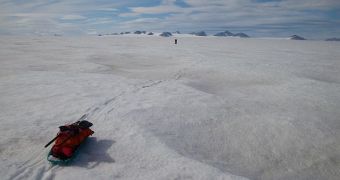About 600 million years ago, the planet was covered in ice. A huge glaciation turned our world into what experts plastically refer to as snowball Earth. Now, investigators at the University of Washington are going out of their way to determine how life managed to survive during those tough times.
“Under those frigid conditions, there are not a lot of places where you would expect liquid water and light to occur in the same area, and you need both of those things for photosynthetic algae to survive,” UW Earth and space sciences PhD student Adam Campbell explains.
He says that algae capable of photosynthesis may have survived in regions such as Antarctica only in stretches of water similar to how the Red Sea looks like today. There is no way that large bodies of water would have been available to these organisms, due to the freezing temperatures.
Unless bacteria co-evolved each time a glaciation occurred – which would raise great problems for evolutionary biology – then it means that some of them learned to make photosynthesis even while trapped in ice.

 14 DAY TRIAL //
14 DAY TRIAL //